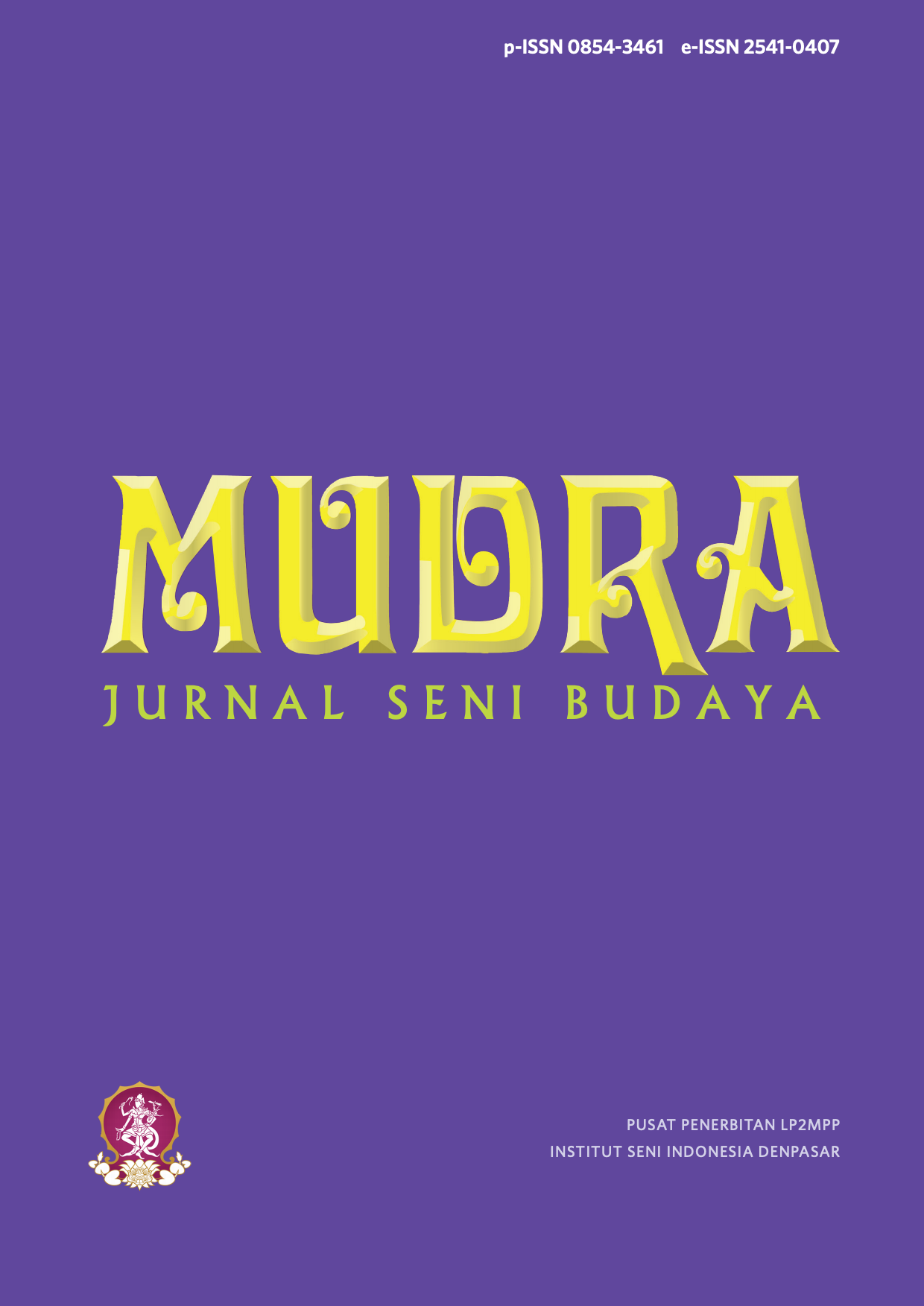Manunggaling Kala Desa Melintas Fenomena Ruang Dan Waktu Dalam Penciptaan Seni Lukis
DOI:
https://doi.org/10.31091/mudra.v24i1.1557Keywords:
lingga-yoni, manunggal, kala desa, ruang, waktuAbstract
Having observed and studied lingga-yoni, I have got an idea about “The Unity of Time-Space, Crossing the Phenomena of Time and Space in the Creation of Painting is the theme of my Works. What I would like to analyze here is the psycho- anthropological aspects of lingga-yoni. Hopefully this analysis is viewed as an effort to reread reinterpret the symbol of lingga- yoni in my paintings. My perception of lingga-yoni related to the unity of time-space is not merely understood as a sensing quality but as a self projection of various values involving new interpretations. I can perceive the significance of lingga-yoni so that I am fully aware of its relationship with time and space. This perception is related not only to the cognitive achievement but also to the feelings of various values such as aesthetical, moral, and religious. Thus in this context, I place the creative exploration in the painting creation as a critical reflection crossing the time and space phenomena with the theme of “Manunggaling Kala- Desa” (the unity of time-space).
Downloads
References
Ambarawati, Ayu. 1997, “Lingga-Yoni di Pura Puseh Babakan Kecamatan Penebel Kabupaten Tabanan”, dalam Forum Arkeologi, No. II Oktober 2007, Balai Akeologi, Denpasar.
Bakker, Anton.1995, Kosmologi dan Ekologi: Filsafat tentang Kosmos Sebagai Rumah Tangga Manusia, Kanisius, Yogyakarta.
Ben/Ays/Ans/ Hrd, (31 Maret 2009), “Industri Pariwisata Bali; Perkembangan Wisata Usik Tradisi”, Kompas.
Geertz, Clifford. 2000, Negara Teater: Kerajaan-Kerajaan di Bali Abad Ke-sembilan Belas, Yayasan Bentang Budaya, Yogyakarta. Karja, I Wayan, (Juni 1996), “Abstraksionisme dalam Seni Lukis”, dalam Wreta Cita No. 6, Sekolah Tinggi Seni Indonesia Denpasar, Denpasar.
Marianto, M. Dwi. 2006, “Metode Penciptaan Seni”, dalam Jurnal Surya Seni, Vol. 2 No. 1 September 2006, Program Pascasarjana Institut Seni Indonesia Yogya-karta, Yogyakarta.
Soedarso Sp. 1998, Trilogi Seni dan Keindahan; Penciptaan Eksistensi dan Kegunaan, Institut Seni Indonesia Yogyakarta, Yogyakarta.
Soedarsono, RM. 2001, Metodologi Penelitian Seni Pertunjukan dan Seni Rupa, Masyarakat Seni Pertunjukan Indonesia (MSPI), Bandung.
Sumardjo, Jakob.2002, Arkeologi Budaya Indonesia (Pelacakan Hermeneutis-Historis Terhadap Artepak-artepak Kebudayaan), Qalam, Yogyakarta.
Zoetmulder, P.J.1982, “ kala desa”; “manakala”; “pinakala”; “tanpakala”, Old Javanese-English Dictionary, s’gravenhage- Martinus Nijhoff: Leiden.
Downloads
Published
How to Cite
Issue
Section
License
Copyright (c) 2009 Author(s)

This work is licensed under a Creative Commons Attribution-NonCommercial-ShareAlike 4.0 International License.
- Copyright on any open access article in a journal published by Mudra Jurnal Seni Budaya is retained by the author(s).
-
The Creative Commons Attribution License 4.0 formalizes these and other terms and conditions of publishing articles.





